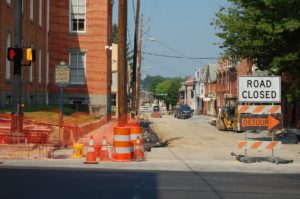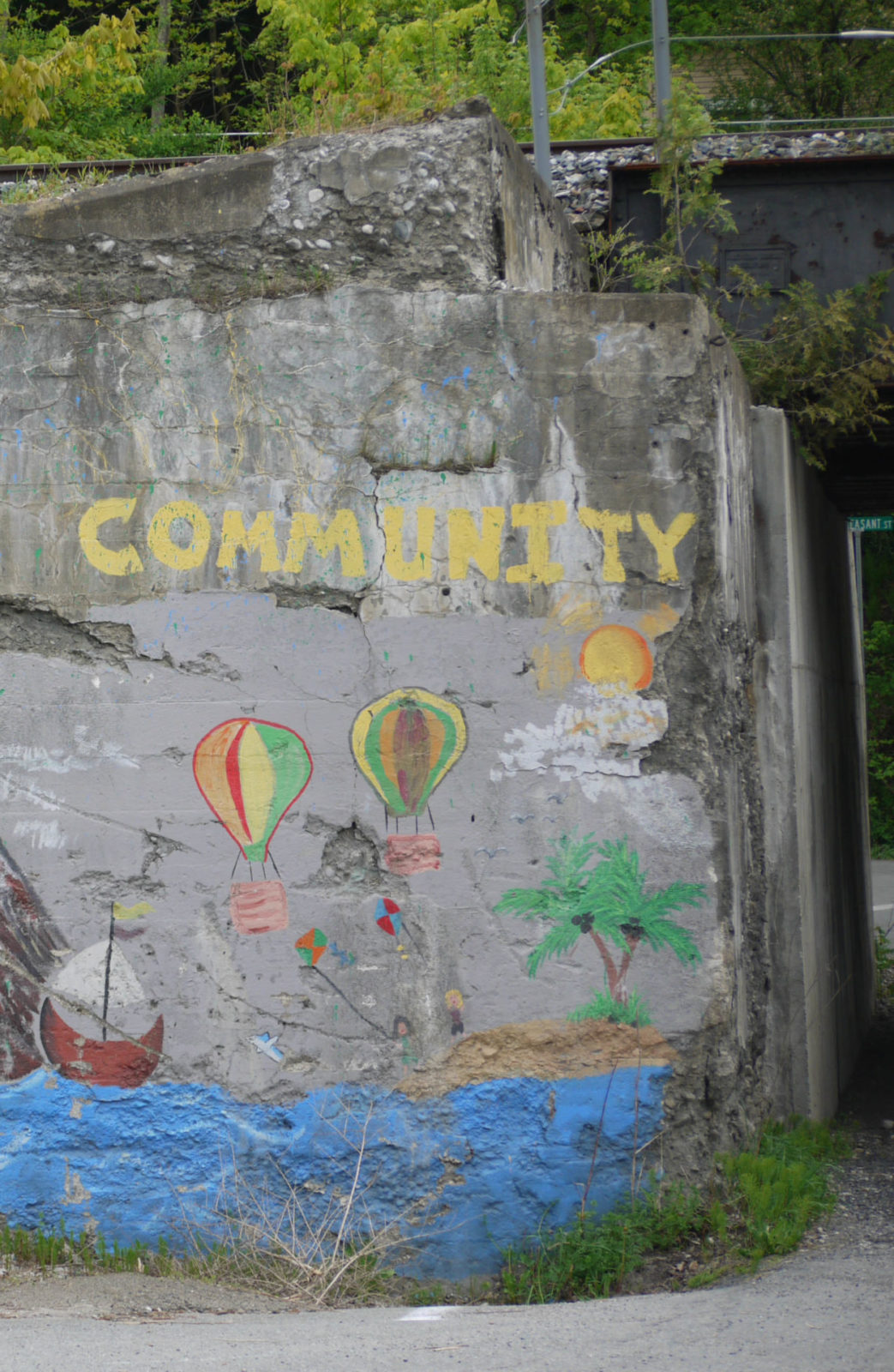Description
Complete streets projects calm traffic and make the road safer and more pleasant for drivers, pedestrians, and cyclists. This is generally accomplished by calming traffic (such as by reducing travel lanes and speed limits), providing bicycle lanes, building bus pullouts, and installing crosswalks. Benefits include increased safety for all who use the road, easier turns for drivers, improved business conditions due to increased foot traffic, and improved neighborhood character.
Complete streets policies formalize a community’s intent to plan, design, and maintain streets so they are safe for all users of all ages and abilities. Policies direct transportation planners and engineers to consistently design and construct the right-of-way to prioritize the safety of the most vulnerable people who use the street including people walking, biking, and moving actively with assistive devices.
Complete streets result in reduced GHG emissions for two reasons. First, some drivers will choose to travel by foot or bicycle instead once these alternative modes of transportation are better accommodated. Second, more people will utilize public transportation because:
- Complete streets provide easier access to bus stops.
- Bus traffic flows more easily.
- Residents are more likely to ride their bicycles to and from bus stops on complete streets, reducing total travel time and increasing the range that residents are willing to travel to reach the bus.

1
2
Implementation Phases
Recommit, embed in planning and budgeting process, identify projects.
Execute projects on continuing/rolling basis.
Challenges
In order for a complete streets policy to be successfully implemented, there has to be leadership commitment to the policy vision and mission chosen by the municipality. The Policy must be considered in all planning and projects and there must be accountability for ensuring the complete streets policy is fully integrated into the plan/design/build process.
It may be difficult for residents and business owners to envision the impacts of complete streets. Inexpensive, flexible materials can be temporarily deployed to demonstrate the benefits of complete streets at dangerous intersections by redirecting cars and adding crosswalks and pedestrian refuges.
Example Municipalities
Several municipalities have already implemented this action…
- Phoenix, Arizona plans to install transit within a half mile of 90% of its residents and thus encourage its residents to use walking, cycling and public transit as their main avenues of transportation. The city hopes that by the year 2050, 40% of its residents will choose these means of transportation.
- Boston, Massachusetts is currently discussing an amendment to its climate plan that would “would institute a new goal to put every home in the city within 10 minutes of public transport, rail station or key bus route, bike share, and car share by 2050”
Greenhouse Gas (GHG) Reductions
Data
Number of car drivers who switch to bikes: 300 people [Bethlehem’s DOT calculation]
Number of miles per day per vehicle: 1 mile [CMAQ Technical Benefits Worksheet:]
Carbon dioxide emission from driving 1 mile by s typical passenger Vehicle: 404 grams [Greenhouse Gas Emissions from a Typical Passenger Vehicle]
Methodology
We calculated the:
- Total number of miles per year reduced due to complete streets.
- Total reduction in CO2 emission due to complete street.
Result
50 ton CO2e is reduced per year after construction and opening of the complete street.
This results MODERATE GHG emissions reductions.

Climate Smart Communities (CSC) & Clean Energy Communities (CEC) Link
This action is also related to several CSC actions for which municipalities can earn points toward certification.
CSC Actions:
- Municipalities can earn 4 CSC points by establishing a Complete Streets Policy through CSC’s PE6 Action: Complete Streets Policy.
- Municipalities can earn 2-15 points through CSC’s PE6 Action: Planning & Infrastructure for Bicycling and Walking.
- Municipalities can earn 3-10 points for implementing specific traffic calming actions through CSC’s PE6 Action: Traffic Calming.
- Municipalities can earn 6-15 CSC points for local transportation infrastructure projects that meet NYSDOT GreenLITES criteria. Municipalities first submit plans to NYSDOT for GreenLITES certification and then earn CSC points based on the level of certification recognized by NYSDOT.

Co-benefits
There are multiple co-benefits to completing this action, including:
- Traffic calming results in enhanced safety for automobiles, bicyclists and pedestrians.
- Increased shopping at local business establishments.
- Economic benefits for local businesses.
- Increased sense of community with increase in bicyclists and pedestrians.
Resources
https://smartgrowthamerica.org/wp-content/uploads/2016/08/cs-transit.pdf
https://smartgrowthamerica.org/program/national-complete-streets-coalition/
https://smartgrowthamerica.org/wp-content/uploads/2019/05/Best-Complete-Streets-Policies-of-2018.pdf



